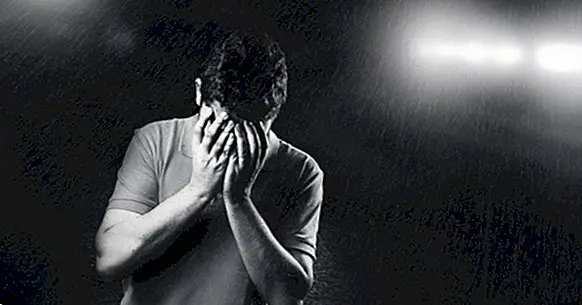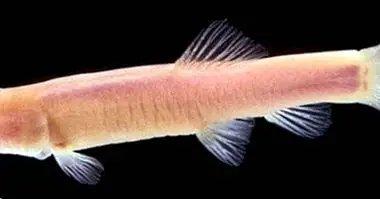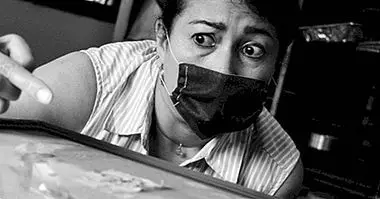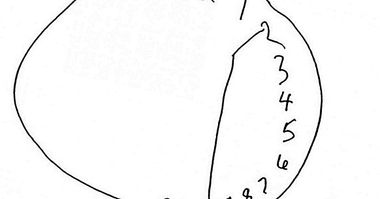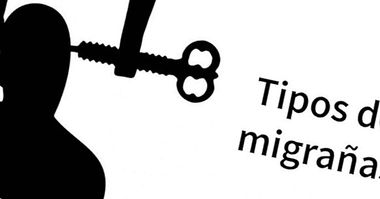Manic depression: symptoms, causes and treatments
Manic depression: this concept, barely used today, refers to one of the most common mood disorders and acquaintances after the depression.
It is one of the old denominations that is currently known as bipolar disorder. Although for some this denomination can have romantic connotations, the truth is that it is a disorder that generates a high suffering and that can cause serious alterations in the daily life of those who suffer from it, and its treatment is essential.
In this article we will see what is manic depression , what causes are attributed to it and some of the main treatments applied.
- Related article: "The 16 most common mental disorders"
What is manic depression?
Manic depression, manic-depressive psychosis or bipolar disorder. These different denominations have arisen in different historical contexts in which different orientations and currents of thought also prevailed, although in practice they refer to the same disorder.
Specifically, in all cases reference is made to a mental disorder categorized within mood disorders and characterized by the presence of one or more episodes of mania and / or hypomania in alternation or absence of depressive episodes .
Thus, in this disorder the state of mind can pass from episode of maximum exaltation and increase of activity and energy to a state of deep sadness, despair and passivity. Such fluctuation can occur followed or separated by an asymptomatic period , and the passage from one pole to another can occur in short periods of time.
- You may be interested: "Are there several types of depression?"
Types of bipolar disorder or manic depression
There are two basic types of bipolar disorder: in type 1 there is at least one manic or mixed episode, which may occur preceded or followed by a major depressive episode. However, the latter is not essential for diagnosis. With regard to bipolar disorder type 2, the diagnosis of the presence of one or more major depressive episodes is required along with at least one hypomanic episode, without any case of a manic or mixed episode.
In the manic episodes appears an expansive mood , euphoric or even irritable in that there is a high level of agitation and activity for almost the entire day for at least a week. In this state usually appears feeling of grandiosity (can reach delirium), logorrhea, flight of ideas or feeling that you lose the thread of thought, tachypsychia, distractibility, disinhibition, aggressiveness, hallucinations and risk tendency and not value the consequences of the acts themselves. The hypomanic symptoms are similar, but they are not so serious, symptoms such as hallucinations and delusions can not occur and they occur for at least four days.
In depressive episodes there is a low mood and / or loss of interest and the ability to feel pleasure along with other symptoms such as hopelessness, lack of energy and passivity, disturbances of food and sleep, fatigue or thoughts of death or suicide for at least two weeks.
Effects of symptoms
The symptoms referred to above, alternate or not manic and depressive episodes, generate a large number of repercussions in the subject that can alter and limit a great variety of elements and vital domains.
At the academic and labor level, the existence of episodes can affect the ability to develop and follow plans, reduce performance or generate conflictive or unproductive behaviors, as well as decrease the ability of the subject to concentrate. You may also have difficulties when assessing aspects such as the value and use of money due to the extreme impulsiveness that may occur .
The social sphere can also be affected. In a manic phase the subject can show an uninhibited sexuality and / or be irritable and even aggressive, present delusions of greatness and antisocial behaviors, as well as in depressive phases you may lose interest in relating .
In any case, one of the aspects with which more care should be taken is with the possibility of suicide. In fact, manic depression is one of the mental disorders in which there is an increased risk of suicide.
- Related article: "Suicidal thoughts: causes, symptoms and therapy"
Possible causes
Although the origin of manic depression is not entirely clear, the proposed explanations usually start from factors of biological origin very similar to those of depression.The existence of imbalances in the synthesis and reuptake of neurotransmitters is proposed.
Specifically, it has been observed that noradrenaline levels decrease during depressive episodes and increases in maniacs. The same thing happens with dopamine. As far as serotonin is concerned, it is found in lower proportions than usual in both types of episodes.
Structures such as the amygdala are altered, and hypoperfusion is also observed in different brain areas in the different types of episodes (less blood comes to the frontotemporal in mania and left prefrontal in depression). It has also been proposed that bipolar or manic-depressive symptoms may be related to problems in the transport of the nerve signal.
The environment also participates in its genesis, destabilizing stressful events the biological rhythm. In addition, it is also proposed, as in depression, the existence and influence of Cognitive distortions that generate dysfunctional schemes . The cognitive triad of thoughts about oneself, the world and one's own future would oscillate between depressive and other expansive and glorified negative thoughts.
Treatments
The treatment of manic depression or bipolar disorder requires a multidisciplinary approach. The main objective of the treatment is to keep the mood stable. For it At the pharmacological level, mood stabilizers are used , the main one being lithium salts. This substance has a mechanism of action little known but as a general rule of great efficiency, based on its modulation of synaptic transmission. Once the subject is stabilized, it is necessary to establish a maintenance dose that allows new crises to be prevented.
However the pharmacological treatment it can lead to annoying side effects . It is therefore necessary to apply strategies such as face psychoeducation to favor adherence. You can also teach self-assessment strategies of the state and the symptoms that can warn of the arrival of a crisis and prevent them from occurring.
Work with the environment is also essential, so that the affected family members know the reason for certain attitudes and behaviors, relational problems are solved and can help to help the affected and know how to identify possible symptoms. The subject with manic depression can benefit from other psychological treatments used in depression, like Beck's cognitive therapy .
Also, there is interpersonal therapy and social rhythm as a treatment based on the regulation of biorhythms and personal relationships that may be helpful for subjects with this disorder.
In some especially serious cases, and especially in cases where there are severe manic symptoms, psychotic symptoms or imminent suicide risk, Electroconvulsive therapy has been successfully applied (which is currently applied in a controlled manner, with sedation and monitoring).
- Related article: "Aaron Beck's Cognitive Therapy"
Bibliographic references:
- American Psychiatric Association. (2013). Diagnostic and Statistical Manual of Mental Disorders. Fifth edition. DSM-V. Masson, Barcelona.
- Belloch, Sandín and Ramos (2008). Manual of Psychopathology. McGraw-Hill. Madrid.
- Santos, J.L. ; García, L.I. ; Calderón, M.A. ; Sanz, L.J .; de los Ríos, P .; Left, S .; Román, P .; Hernangómez, L .; Navas, E .; Thief, A and Álvarez-Cienfuegos, L. (2012). Clinical psychology. CEDE Preparation Manual PIR, 02. CEDE. Madrid.
- Welch, C.A. (2016). Electroconvulsive therapy In: Stern TA, Fava M, Wilens TE, Rosenbaum JF, eds. Massachusetts General Hospital Comprehensive Clinical Psychiatry. 2nd ed. Philadelphia, PA: Elsevier

